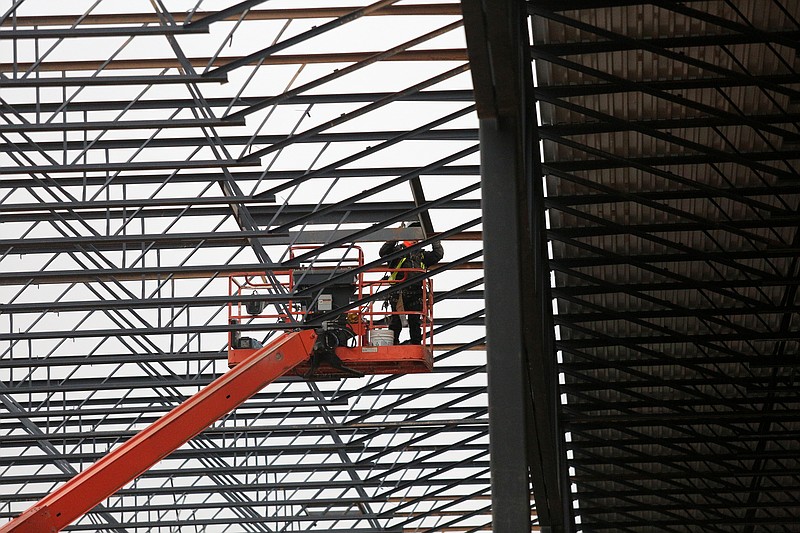Top 10 “serious” violations
The Occupational Safety and Health Adminstration defines a “serious” violation as “one in which there is a substantial probability that death or serious physical harm could result, and the employer knew or should have known of the hazard.” In fiscal 2018, the most cited workplace violations by OSHA were:1. Fall protection, construction2. Hazard communication standard, general industry3. Scaffolding and general requirements, construction4. Respiratory protection, general industry5. Control of hazardous energy (lock out and tagout), general industry6. Ladders, construction7. Powered industrial trucks, general industry8. Fall protection, training requirements9. Machinery and machine guarding, general requirements10. Eye and face protectionSource: OSHA
When Donald Trump became president in January 2017, he issued an executive order that for each new regulation proposed by a federal agency, that agency must identify two existing regulations to be repealed. Trump also ordered a freeze on all pending new regulations until reviewed by the Office of Financial Research for their benefit-to-cost ratio. The Brookings Institution counts nearly four dozen major regulations that have been delayed or repealed under Trump over the past two years, many of which the president claims have helped economic growth in the United States.
New electronic reporting rules that would have required all employers to report any worker injury or accident have been suspended for any employer with fewer than 250 employees under the Trump administration. Similarly, Obama proposals that would have allowed labor union representatives into non-union plants for safety inspections were scrapped by the Trump labor department.
But even with fewer regulations, Chambliss attorneys Mike Mallen and Justin Furrow said employers still need to be alert and vigilant about workplace safety and compliance with worker safety and other human resources regulations.
Mallen, who joined the Chambliss labor and employment law team last year, worked in manufacturing earlier in his career and is often able to spot potential problems and solutions on the work site to improve safety and thereby limit injuries, penalties and adverse workers compensation claims.
Mallen and Furrow, who heads the Chambliss labor and employment law division, talked with Edge editor Dave Flessner about what companies should try to do to limit accidents and to stay within the law.
How has the regulatory landscape changed for employers in the past two years under the Trump administration?
Mallen: The Obama administration was very focused on employee rights and after the inauguration the Trump administration issued a cease and desist to all departments about issuing new rules without more justification of the need. The knee jerk reaction was there is going to be a lot less workplace safety and environmental regulation. But environmentally, I don't think the brakes really got pumped that much and the administration has come around and Trump said EPA was going to get busier cleaning up Superfund sites.
Trump stopped more electronic reporting on workplace injuries for employers with fewer than 250 workers. But penalties have gone up exponentially and new standards continue to show up. There is a new standard in construction for Crystalline Silica exposure. There is a new standard for Beryllium exposure, and a new standard for confined spaces.
Even an employer who does his or her level best to be compliant, it's a hard task to keep up with everything in real time because the sands are shifting constantly.
An estimated 2 million construction workers are exposed to respirable cystalline silica, which is linked with lung cancer, kidney disease, silicosis and respiratory diseases. What are the new OSHA rules for Silica exposure?
Mallen: People who are grinding, sanding, cutting or most any workplace scenario where you have dust could be required to comply with the new rules. In general industry there has been a silica standard for years, such as at the old foundries in Chattanooga. But OSHA has created twin rules now for construction and if you are in that industry you've got to pay attention to exposure levels, which means you may have to have an industrial hygienist to monitor levels. The solution may be as simple as ventilation or a dust mask, or you may have an exposure level that requires a written respiratory protection program.
All construction employers covered by the standard are required to:
* Establish and implement a written exposure control plan that identifies tasks that involve exposure and methods used to protect workers, including procedures to restrict assess to work areas where high exposure may occur.
* Designate a competent person to implement the written exposure control plan.
* Restrict housekeeping practices that expose workers to silica where feasible alternatives are available.
* Offer medical exams, including chest X-rays and lung function tests, every three years for workers who are required by the standard to wear a respirator for 30 or more days per year.
* Train workers on work operations that resulting silica exposure and ways to limit exposure.
* Keep records of workers' silica exposure and medical exams.
How do you best comply with OSHA regulations and limit workplace injuries?
Furrow: Perhaps the first and best step we can take in preventing workplace injuries and fatalities is to be informed. Employers need to proactively assess potential hazards and issues so their workforce remains safe and productive. That's one of the real strengths we have with Mike because he has worked in industry and can walk on a job site and often detect problems and recommend solutions for the employer.
Employers often want to reward workers for maintaining a safe work environment. What do employers need to be cautious about in offering rewards when fewer incidents are reported?
Furrow: Under whisteblower protection rules (section 11-c of the OSH Act of 1970), you as an employer need to be cautious about offering cash bonuses if there are no reportable incidents or fewer reportable incidents in a year. You don't want to unintentionally encourage people not to report injuries or violations so they can get a bonus. Your metrics for success should be behavior based, not injury based. You should reward people for coming up with a new idea to make the workplace safer or coming up with a suggestion about how to modify a process. Recognition of success is a good idea, but not outright cash gifts that might encourage an under reporting of incidents.
The overtime rules under the FSLA (Fair Standards Labor Act) were due for change and then were set aside in late 2016. What is the status of changes in overtime rules, especially for the minimum pay for those managers and foremen now exempt from overtime payments for work beyond 40 hours a week?
Furrow: The FSLA standards for overtime were due to become effective in December 2016 when a court intervened to block their implementation. The DOL has recently sent to the Office of Management and Budget (OMB) for pre-publication approval new regulations that would raise the minimum salary requirement for the FLSA white collar exemptions (a.k.a. the "Overtime Rule"). You can look for those to probably come in the next six months.
(If approved, these regulations would replace an Obama-era DOL rule issued in 2016 that was never implemented, but would have increased the minimum salary level to qualify for the exemption as an executive, administrative or professional employee from $455 per week, or $23,660 per year, to $913 per week, or $47,476 a year. The new minimum salary level has not yet been released but it is expected to be lower than the original $47,476.)
Mike Mallen and Justin Furrow are attorneys in the labor and employment practice of the Chambliss Law firm in Chattanooga.


